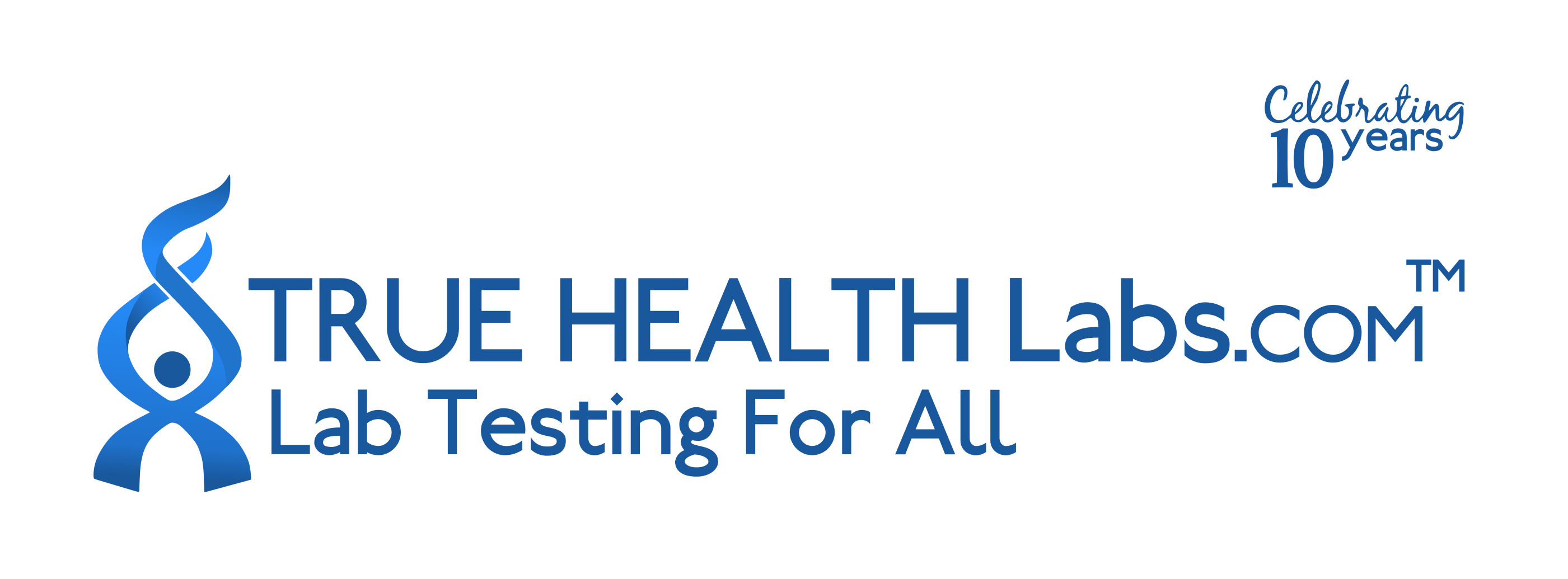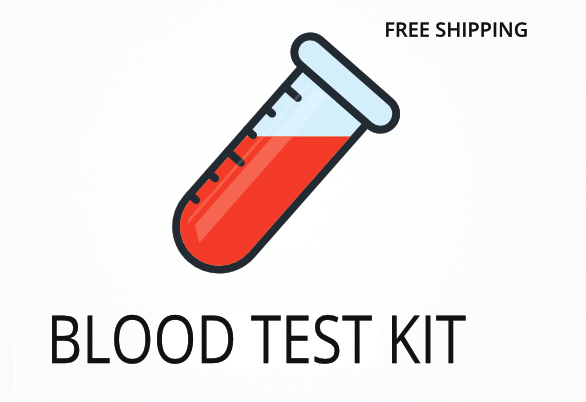Ordering the Fatty Acid Profile Plasma | Europe
The Fatty Acid Profile Plasma test helps measure the balance of different fats in your blood, including omega-3, omega-6, omega-9, and saturated fats. These fats play a role in how your body manages energy, supports your brain, and keeps your heart working well. Interestingly, this test can also show if your body is making enough anti-inflammatory fats, which can affect how you feel day to day.
Ordering this test can help you:
- Check if your omega-3 and omega-6 levels are balanced for better heart and brain support
- Find out if your body is making too many fats that can lead to joint pain or skin problems
- See if your fat levels are linked to memory loss, mood swings, or trouble focusing
- Spot early signs of insulin resistance or high triglycerides before they become bigger problems
- Track how changes in your diet or supplements are working for you
Who Should Consider a Fatty Acid Blood Panel
People who have ongoing joint pain, trouble with memory, or skin issues like eczema may benefit from this test. For example, someone who has tried different diets for weight management but still feels tired and has trouble concentrating might find answers by checking their fatty acid levels.
Ordering this test may also be helpful if you:
- Have a family history of heart disease or high cholesterol
- Notice mood swings or symptoms of depression that don’t improve with other treatments
- Struggle with energy levels even after making changes to your sleep or exercise routine
- Experience frequent flare-ups of psoriasis or other skin conditions
- Are curious if your joint pain could be linked to an imbalance in omega-3 and omega-6 fats
Testing your blood for fatty acids can help you see if your body is getting the right mix of fats for better energy, focus, and support for your heart and brain. Waiting to order this test could mean missing early signs of problems that are easier to manage when caught sooner.
Preparing for a Plasma Fatty Acid Panel
Fasting is not required for this test, but always check the test kit instructions for any special steps before your blood draw. Make sure to follow whatever guidance your doctor or healthcare practitioner gives you, as this can help you get the most useful results from your sample.
Labs Included When Ordering Your Fatty Acid Profile Plasma
| Test Name | Reference Range | What This Marker Means | Low and High Levels of Fatty Acid Profile Plasma |
|---|---|---|---|
| Polyunsaturated Omega-3 | |||
| Alpha-Linolenic Acid (ALA) | 0.1–0.4 | ALA is a plant-based omega-3 fat that helps your body make EPA and DHA, which support brain and heart function. |
High levels mean your body may not be converting ALA to EPA and DHA well.
Low levels mean you may not be getting enough plant-based omega-3s from your diet. |
| Eicosapentaenoic Acid (EPA) | 0.5–2.0 | EPA is an omega-3 fat found in fish that helps lower inflammation and supports heart and brain health. |
High levels mean you may be taking too many fish oil supplements.
Low levels mean you may have higher inflammation or risk for heart problems. |
| Docosapentaenoic Acid | 0.2–0.8 | This omega-3 fat is made from EPA and helps support brain and nerve function. |
High levels mean your body may be converting EPA to DPA more than usual.
Low levels mean you may not be getting enough omega-3s for nerve support. |
| Docosahexaenoic Acid (DHA) | 1.5–4.0 | DHA is an omega-3 fat important for memory, focus, and brain development. |
High levels mean you may be taking too much fish oil or supplements.
Low levels mean you may have trouble with memory, focus, or mood. |
| Polyunsaturated Omega-6 | |||
| Linoleic Acid | 15–30 | Linoleic acid is a common omega-6 fat found in many vegetable oils and helps with skin and cell function. |
High levels mean you may have more inflammation or risk for joint pain.
Low levels mean your skin or cells may not be working as well as they should. |
| Gamma Linolenic Acid (GLA) | 0.1–0.4 | GLA is an omega-6 fat that helps lower inflammation and supports skin health. |
High levels mean you may be taking too many supplements with GLA.
Low levels mean you may have more skin problems or inflammation. |
| Eicosadienoic Acid | 0.1–0.3 | This omega-6 fat is involved in making other fats that help with cell growth and repair. |
High levels mean your body may be making more omega-6 fats than needed.
Low levels mean you may not be making enough fats for cell repair. |
| Dihomogamma Linolenic Acid (DGLA) | 0.2–0.5 | DGLA is an omega-6 fat that helps lower inflammation and supports immune function. |
High levels mean your body may be making more anti-inflammatory fats.
Low levels mean you may have more inflammation or immune problems. |
| Arachidonic Acid | 3.0–8.0 | Arachidonic acid is an omega-6 fat that helps your body respond to injury but can also increase inflammation if too high. |
High levels mean you may have more inflammation or joint pain.
Low levels mean your body may not respond as well to injury or stress. |
| Docasadienoic Acid | 0.1–0.3 | This omega-6 fat helps with cell growth and repair, especially in the skin and nerves. |
High levels mean your body may be making more omega-6 fats than needed.
Low levels mean you may not be making enough fats for skin and nerve repair. |
| Docosatetraenoic Acid | 0.1–0.4 | This omega-6 fat is involved in making other fats that help with cell function and repair. |
High levels mean your body may be making more omega-6 fats than needed.
Low levels mean you may not be making enough fats for cell repair. |
| Polyunsaturated Omega-9 | |||
| Mead Acid | 0.02–0.10 | Mead acid is made when your body does not get enough omega-3 or omega-6 fats, and can show if you are missing these in your diet. |
High levels mean you may not be getting enough omega-3 or omega-6 fats.
Low levels mean your diet likely has enough of these fats. |
| Monounsaturated | |||
| Myristoleic Acid | 0.01–0.05 | This fat is found in some plant oils and helps with cell membrane flexibility. |
High levels mean you may be eating more plant oils.
Low levels mean your cell membranes may be less flexible. |
| Palmitoleic Acid | 0.2–0.6 | Palmitoleic acid is a monounsaturated fat that helps with metabolism and may lower inflammation. |
High levels mean you may have more fat production in your body.
Low levels mean you may have less support for metabolism. |
| Vaccenic Acid | 0.1–0.4 | Vaccenic acid is found in dairy and some plant oils and helps with cell membrane health. |
High levels mean you may be eating more dairy or plant oils.
Low levels mean your cell membranes may be less healthy. |
| Oleic Acid | 10–25 | Oleic acid is the main fat in olive oil and helps support heart and cell health. |
High levels mean you may be eating more olive oil or monounsaturated fats.
Low levels mean you may have less support for heart and cell function. |
| 11-Eicosenoic Acid | 0.1–0.3 | This monounsaturated fat helps with nerve and cell function. |
High levels mean you may be eating more nuts and seeds.
Low levels mean your nerve and cell function may be less supported. |
| Nervonic Acid | 0.2–0.6 | Nervonic acid is important for brain and nerve cell health. |
High levels mean you may be eating more seeds or have changes in nerve cell metabolism.
Low levels mean your brain and nerve cells may not be getting enough support. |
| Saturated | |||
| Capric Acid | 0.01–0.05 | Capric acid is a saturated fat found in coconut oil and dairy, used for energy by the body. |
High levels mean you may be eating more coconut oil or dairy.
Low levels mean your body may have less quick energy from fats. |
| Lauric Acid | 0.1–0.3 | Lauric acid is a saturated fat found in coconut oil and helps with energy and immune support. |
High levels mean you may be eating more coconut oil.
Low levels mean your body may have less support for energy and immune function. |
| Myristic Acid | 0.2–0.6 | Myristic acid is a saturated fat found in dairy and some plant oils, used for energy and cell structure. |
High levels mean you may be eating more dairy or plant oils.
Low levels mean your cells may have less support for structure and energy. |
| Palmitic Acid | 20–30 | Palmitic acid is a common saturated fat in the diet and helps with energy and cell structure. |
High levels mean you may be eating more animal fats or processed foods.
Low levels mean your cells may have less support for structure and energy. |
| Stearic Acid | 10–20 | Stearic acid is a saturated fat found in animal fats and chocolate, used for energy and cell structure. |
High levels mean you may be eating more animal fats or chocolate.
Low levels mean your cells may have less support for structure and energy. |
| Arachidic Acid | 0.2–0.5 | Arachidic acid is a saturated fat found in peanuts and some plant oils, used for energy and cell structure. |
High levels mean you may be eating more peanuts or plant oils.
Low levels mean your cells may have less support for structure and energy. |
| Behenic Acid | 0.1–0.3 | Behenic acid is a saturated fat found in peanuts and helps with cell membrane structure. |
High levels mean you may be eating more peanuts.
Low levels mean your cell membranes may be less supported. |
| Lignoceric Acid | 0.1–0.3 | Lignoceric acid is a saturated fat found in peanuts and some plant oils, used for cell membrane structure. |
High levels mean you may be eating more peanuts or plant oils.
Low levels mean your cell membranes may be less supported. |
| Hexacosanoic Acid | 0.01–0.05 | Hexacosanoic acid is a long-chain saturated fat that helps with cell membrane structure. |
High levels mean you may be eating more animal or plant fats.
Low levels mean your cell membranes may be less supported. |
| Odd Chain | |||
| Pentadecanoic Acid | 0.01–0.05 | Pentadecanoic acid is an odd-chain saturated fat found in dairy and may show how much dairy you eat. |
High levels mean you may be eating more dairy.
Low levels mean you may be eating less dairy. |
| Heptadecanoic Acid | 0.01–0.05 | Heptadecanoic acid is an odd-chain saturated fat found in dairy and may show how much dairy you eat. |
High levels mean you may be eating more dairy.
Low levels mean you may be eating less dairy. |
| Nonadecanoic Acid | 0.01–0.05 | Nonadecanoic acid is an odd-chain saturated fat found in dairy and may show how much dairy you eat. |
High levels mean you may be eating more dairy.
Low levels mean you may be eating less dairy. |
| Heneicosanoic Acid | 0.01–0.05 | Heneicosanoic acid is an odd-chain saturated fat found in dairy and may show how much dairy you eat. |
High levels mean you may be eating more dairy.
Low levels mean you may be eating less dairy. |
| Tricosanoic Acid | 0.01–0.05 | Tricosanoic acid is an odd-chain saturated fat found in dairy and may show how much dairy you eat. |
High levels mean you may be eating more dairy.
Low levels mean you may be eating less dairy. |
| Trans | |||
| Palmitelaidic Acid | 0.01–0.05 | Palmitelaidic acid is a trans fat that can come from processed foods and may affect heart health. |
High levels mean you may be eating more processed foods.
Low levels mean you may be eating fewer processed foods. |
| Total C:18 Trans | 0.01–0.10 | Total C:18 trans fats are found in processed foods and can raise cholesterol and inflammation. |
High levels mean you may be eating more processed foods.
Low levels mean you may be eating fewer processed foods. |
| Ratios (Calculated) | |||
| LA/DGLA | 20–40 | This ratio shows the balance between two omega-6 fats and can help spot problems with inflammation or fat metabolism. |
High levels mean you may have more inflammation or trouble making anti-inflammatory fats.
Low levels mean your body may be making more anti-inflammatory fats. |
| EPA/DGLA | 0.5–2.0 | This ratio shows the balance between omega-3 and omega-6 fats and can help spot problems with inflammation or fat metabolism. |
High levels mean you may have more omega-3s compared to omega-6s.
Low levels mean you may have more omega-6s compared to omega-3s. |
| AA/EPA | 1.5–3.0 | This ratio shows the balance between two fats that affect inflammation and can help spot problems with joint pain or heart risk. |
High levels mean you may have more inflammation or risk for joint pain.
Low levels mean you may have more anti-inflammatory support. |
| Stearic/Oleic | 0.4–0.8 | This ratio shows the balance between a saturated and a monounsaturated fat and can help spot problems with fat metabolism. |
High levels mean you may have more saturated fats compared to monounsaturated fats.
Low levels mean you may have more monounsaturated fats compared to saturated fats. |
Reference ranges may change slightly as labs update their methods or as new research becomes available. Always check your report for the most current reference values.
Fatty Acid Profile Plasma FAQ
Is there Fatty Acid Profile Plasma testing near me?
You can order a test kit and have your blood sample collected at a local draw site, making it easier to check your fatty acid levels if you have ongoing joint pain or skin issues and need quick, convenient access to testing.
How do I interpret the test results?
While your treating physician should review your results, we also offer a one-on-one test results review with our clinical team to help you understand your fatty acid levels and what they mean for you.
What is the cost of the test?
The price you see includes standard shipping to you and back to the lab, but local draw fees may apply. Ordering this test can help you find out if your fatty acid levels are linked to symptoms like fatigue or trouble focusing, so you can make changes that may help you feel better sooner.
How often should I retest?
Retesting every 6 to 12 months is recommended, especially if you are making changes to your diet or supplements, so you can track how your fatty acid levels respond and adjust as needed.
How accurate is the test?
This test uses gas chromatography with flame ionization detection, which is highly specific for measuring fatty acids in plasma, with a specificity of 98% and sensitivity of 97%. TrueHealthLabs.com partners with CLIA-certified and CAP-certified laboratories to uphold rigorous testing standards for dependable results.
Important Notes
READ: These tests are available for European countries only.
Medical Review Board
Reviewed by Jeff Donohue M.D. from Body Logic and Brady Hurst DC, CCCN. Written by True Health Lab’s team of editorial health contributors.
Disclaimer: This information is for educational purposes only and not intended as medical advice. Consult your healthcare provider for personalized guidance.
Why Customers Trust True Health Labs - What People are saying
Also rated 4.6 out of 5 based on 3452 ShopperApproved reviews- See all TrueHealthLabs.com reviews.







